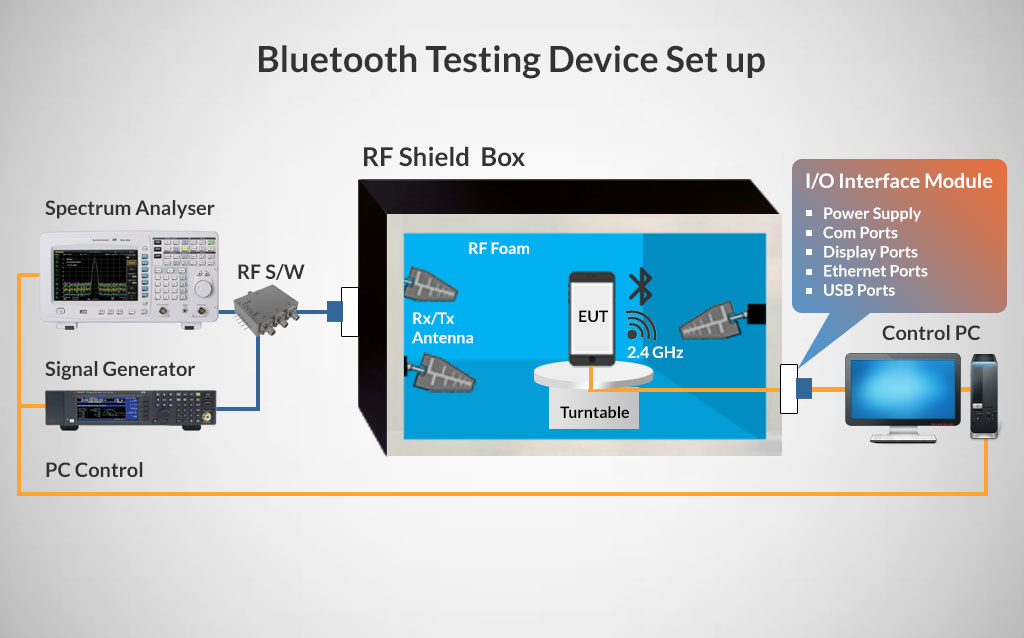
The fifth-generation mobile network is known as 5G. After the 1G, 2G, 3G, and 4G networks, there is now a new worldwide wireless standard. With the help of 5G, a brand-new network may be created that connects almost everyone and everything, including machines, objects, and devices.
Testing for 5G involves more than just verifying the network's extremely high download speeds, extremely low latency, and dense coverage. Simplified, end-to-end
5G device testing solutions will help future 5G networks be developed, installed, and operate to the highest standards.
Current Applications of 5G
As was already said, mobile IoT solutions for pervasive computing, smart logistics, and smart utilities are presently available thanks to 4G standards like NB-IoT and LTE-M, which continue to be crucial components of early 5G releases. Early 5G applications have concentrated on -
-
fixed wireless access,
-
mobile computing,
-
fixed wireless broadcasting,
-
high-speed industrial networking,
-
customer premises equipment (CPE), and
-
enterprise networking (FWA).
RF-Microwave for 5G Market
In the 5G market, RF-microwave are the RF electronics equipment used in cellular communication infrastructure, including wireless telecommunications and data service providers, tower companies, and ISPs. This includes all of the MDUs (multi-dwelling units) wired with Wi-Fi routers for Internet access.
New functionalities that 5G will enable include ultra-reliable low latency communications (URLLC), perception automation and cognitive systems, enhanced mobile broadband (eMBB), flexible bandwidth allocation within massive MIMO arrays, and heterogeneous networks of different types of devices like fixed/mobile phones or vehicular terminals or sensors. This will enable a high-throughput way to use the 5G spectrum for huge amounts of data for applications like smart cities and new digital business models.
To provide users with seamless connectivity, 5G will require several new technologies such as a massive multi-antenna array (MMA) and beamforming or narrowband MIMO (NB-MIMO).
RF-microwave for 5G Market Segmentation By Type
In the 5G Market segmentation, RF Microwaves come in the form of -
1. RF-microwave antennas,
2. RF-microwave car assemblies, and
3. RF-microwave power cables.
RF-microwave for 5G Market Segmentation By Application
RF-microwave for 5G market segmentation has a lot of applications in the
telecommunication infrastructure and test measurements. These applications have a strong relationship with the engineering and design process, as they help in optimizing test measurements using the RF-microwave method.
A 5G market segmentation considers capabilities and requirements to meet network service needs in different areas such as enterprise or macrocell, small cell, rural or remote site, etc. It mainly includes urban macro cell and small cell service coverage details of both femtocell and public outdoor unit (POU) platforms based on their different propagation channels.
At present, most of the major companies across different countries are actively exploring an RF-microwave test system that can be used in their research and development programs as well as field test measurements with higher accuracy compared to conventional systems.
Key Drivers of RF-Microwave for 5G Market
The key drivers of RF-microwave in the 5G market are the increase in investments for 5G and the ever-growing requirements to boost communication signals. One of the main causes that had already been mentioned was the proliferation of small cells and the increasing number of wireless devices. With this, RF-microwave technologies have become even more important in many applications such as backhaul, smart city IoT networks, video surveillance networks, and public safety communications. In addition to these factors are other obstacles to commercialization and deployment of 5G including regulations on privacy, spectrum availability for high bandwidth usage efficiency, as well as costs for equipment.
Key Restraints of RF-Microwave for 5G Market
The current restraints of the RF-microwave for the 5G market are the security and cost issues of the 5G infrastructure. A huge allocation of capital will be required to develop 5G infrastructure. However, uncertainties and challenges towards the commercialization and deployment of 5G infrastructure have arisen as the operators do not know how much it will cost. Many more trials are needed to determine the issues faced in deploying 5G networks in a real environment before they commence large-scale investment. Another factor is the security issue of network infrastructures that are needed to be solved before investing in them.
When compared to 2G,3G, and 4G wireless communication standards, the 5th generation wireless communication standard offers a wide range of improvements such as greater speed and capacity.
Conclusion
People demand the best level of performance from wireless technologies. With latency as low as 1 millisecond, new 5G innovations enable speeds up to 100 times quicker than current cellular connections. You anticipate a 5G device to perform well when you purchase it.
High Performance Delivery Requirement demands elevated performance of testing apparatus. Within such controlled environment, 5G testing enables us to assess the precision of any 5G or RF equipment and enables us to define how well it performs.
If you're seeking
5G device testing solutions, such as an
RF Shield Box , RF Electronics is the place to go.


